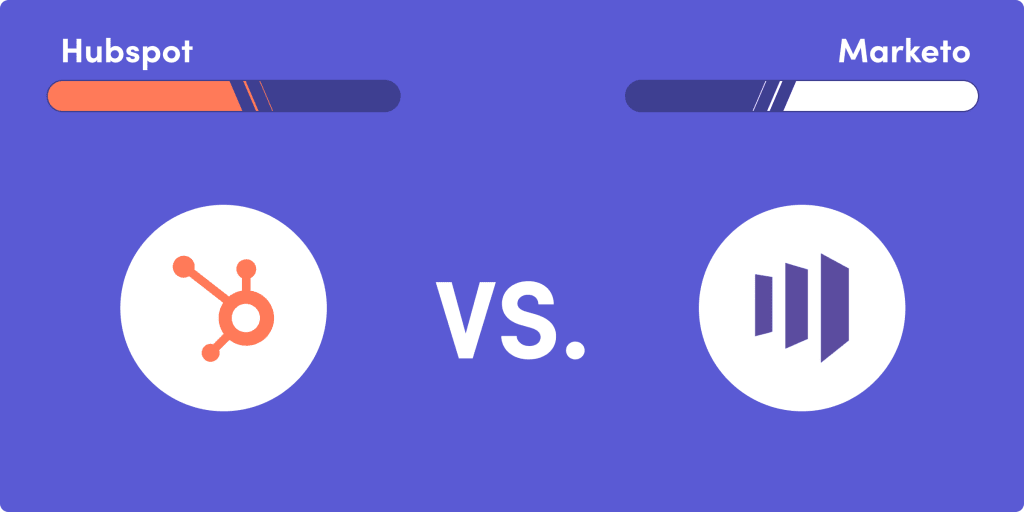If you’ve been involved in marketing, sales, or business in general for a while, then you’ve probably heard about Marketo and HubSpot. Both brands have built solid names in the business software community, and it can be hard to tell which one is better for you.
So, how do they compare? What are their main differences and similarities? Which features do they offer? And how does their pricing work In this article, we’ll answer those questions as clearly — and fairly — as possible.
Let’s start with the basics.
What is HubSpot?
HubSpot is actually a small suite of 4 business-related products: Marketing Hub, Sales Hub, Service Hub, and CMS Hub.
Let’s quickly break them down.
Marketing Hub
As the name suggests, HubSpot’s Marketing Hub helps marketing teams organize, manage, and track all their activities, including lead generation, lead nurturing, and campaign tracking.
Marketing Hub’s features include:
- Social media management: monitor brand mentions and manage your social networks in one place.
- SEO: discover keyword opportunities and optimize your content for search engines.
- Ad tracking and management: organize and manage all your advertising and track your results with ease.
- Landing page builder: design and launch new landing pages and marketing assets.
- Email marketing: create emails, segment your contacts, and personalize content for recipients.
Sales Hub
Sales Hub is a cloud-based CRM software solution designed to help sales teams manage their pipeline and close more deals.
Sales Hub’s most popular features include:
- Email tracking: get a notification every time a new lead opens your emails.
- Contact management: store and organize customer information.
- Call tracking and recording: record all your calls and log them into your CRM.
- Document management: keep your contracts, proposals, and sales content handy for everyone in your team.
- Live chat: start a conversation with prospects who are engaging with your website.
- Quotes: generate and send custom quotes to your prospects.
Service Hub
Service Hub is designed to help growing customer service teams streamline their operations and provide a better experience to customers.
For instance, Service Hub offers:
- Help desk automation: prioritize tickets and route conversations to specific reps automatically.
- Knowledge base: turn FAQs into a content-rich, searchable library.
- Team management: manage agent permissions and organize your team workflow.
- Surveys: collect customer feedback through customizable surveys.
- Dashboards: turn your data into reports with ease.
CMS Hub
HubSpot’s CMS Hub is a content management system designed for cross-team collaboration. It helps marketing, developers, and IT teams work together to create a personalized content experience.
Some of the core features CMS Hub offers are:
- Multi-language content creation: manage multiple language domains and allow users to read your content in their own language.
- Contact attribution: discover which activities are driving more conversions and optimize your work accordingly.
- Website themes: choose between pre-designed themes to build your website.
- Content editor: create, publish, and edit your content without custom code.
Read also: CRM vs CMS – whats the difference
Who uses HubSpot?
In short, HubSpot is geared toward businesses of all sizes that want to tap into CRM systems, inbound marketing, and basic to mid-level automations. HubSpot supports marketing, sales, and customer service departments looking to centralize their information.
What is Marketo?
Marketo is an account-based marketing automation system that focuses on lead management, content personalization, and lead nurturing automation.
As of September 2018, Adobe acquired the company and integrated it into Adobe Experience Cloud (formerly Adobe Marketing Cloud).
Marketo’s products include the following.
Marketo Engage
Marketo Engage markets itself as an “end-to-end engagement platform.” It’s a platform where you can map, design, and automate the customer journey and optimize your processes.
Some of the main features of Marketo Engage include:
- Marketing data environment: use customer engagement history to build audiences and segments.
- Content personalization: use AI to personalize the content experience.
- Cross-channel engagement: connect offline event marketing with online experiences
- Experience automation: score your leads based on engagement and nurture your contacts with dynamic content.
Bizible
Bizible is an enterprise-level marketing attribution solution that helps you track and attribute revenue from any multi-channel marketing campaign.
Some of Bizible’s main features include:
- Touchpoint tracking: visualize the entire B2B customer’s journey and track crucial touchpoints.
- Attribution modeling: attribute key metrics to specific touchpoints and marketing efforts.
- Analytics: monitor the progress of your marketing campaigns through intuitive dashboards.
Adobe Experience Cloud
Adobe Experience Cloud is a set of Customer Experience Management (CMX) applications for marketing, analytics, commerce, and advertising.
Adobe Experience Cloud’s main features include:
- Data: collate data from all your channels and use it to build customer profiles.
- Content: use AI to organize your content and personalize the experience.
- Optimization: learn the impact of your interactions and optimize content based on predictions.
Who uses Marketo?
Marketo targets high-growth and enterprise-level organizations looking to automate complex marketing processes and operations.
Based on the features Marketo offers, it’s probably more geared towards B2C brands that need to offer personalized experiences to stand out in hyper-saturated markets.
What are the main differences between HubSpot and Marketo?
The main difference between these platforms lies in the intention of each.
HubSpot aims to help teams organize the entire conversion funnel. From awareness to decision, HubSpot provides its customers with helpful tools to target their audience at each stage.
On the other hand, Marketo mainly focuses on the awareness, interest, and consideration stages, achieving a higher level of specialization than HubSpot.

For instance, with HubSpot, you can create forms, landing pages, and call-to-actions.
Marketo, by contrast, doesn’t provide many conversion features. It does, however, help you create highly personalized content to tailor your marketing campaigns to specific audiences.
In terms of SEO, HubSpot helps you implement on-page optimization, whereas Marketo focuses on preliminary research like keyword analysis and backlink opportunities.
In short, HubSpot provides you with a versatile kit of tools for inbound marketing, sales, and customer service, while Marketo specializes in marketing intelligence and automation.
The downside with both platforms is that neither of them offers the level of flexibility modern teams need. That is, the ability to customize everything to fit your needs.
While HubSpot is kind of intuitive, it’s also limited to a specific way of working. And to get the most out of Marketo, you might need moderate technical knowledge.
For comparison purposes, monday.com offers a more visual and user-friendly interface. With vivid colors and built-in drag-and-drop functionalities, you can design any kind of workflow with ease.
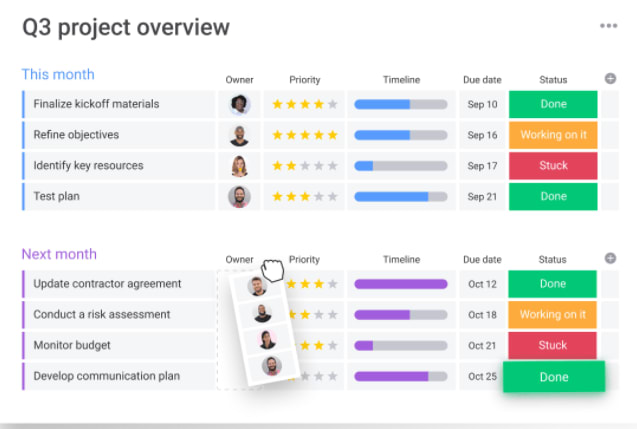
HubSpot vs. Marketo: pricing
Now that you understand what both platforms offer, the question is: how much do they cost?
So let’s quickly cover HubSpot and Marketo pricing, so you can make a more informed decision about which one may be right for your business.
HubSpot pricing
As you may imagine, HubSpot’s pricing depends on the product you select and the size of your database. Here’s how it works:
Marketing Hub pricing:
- Starter: starts at $45 per month, billed annually.
- Professional: starts at $800 per month, billed annually.
- Enterprise: starts at $3,200 per month, billed annually.
Sales Hub pricing:
- Starter: starts at $45 per month, per user, billed annually.
- Professional: starts at $375 per month, per user, billed annually.
- Enterprise: starts at $1,200 per month, per user, billed annually.
Service Hub pricing
- Starter: starts at $45 per month, per user, billed annually.
- Professional: starts at $300 per month, per user, billed annually.
- Enterprise: starts at $1,200 per month, per user, billed annually.
CMS Hub pricing
- Professional: starts at $225 per month, billed annually.
- Enterprise: starts at $900 per month, billed annually.
HubSpot also offers a freemium version for each of their products and the option to get product bundles at a discounted price.
Marketo pricing
Marketo doesn’t include specific pricing information about their plans but groups them into the following tiers:
- Select: for teams looking for basic automations and measurement options.
- Prime: for growing account-based marketing organizations looking for advanced AI personalization.
- Ultimate: for businesses wanting to automate complex processes and experiences.
- Enterprise: for enterprise-level brands handling multiple teams.
Even though Marketo isn’t as transparent about pricing as we’d like, we’ve been able to find an estimated range of $960 per month to over $7,000 per month, depending on the size of your database and desired features.
What about integrations?
In today’s day and age, integrations are essential to fully manage a team.
Why?
Because no team operates with just a single tool.
Research suggests that the average small business operates with 102 different apps, while enterprise-level organizations use an average of 288 SaaS apps.
What does that mean for you?
If your most important software doesn’t integrate with at least some of the tools and apps you already use, you’ll struggle to centralize your information.
While features and pricing are crucial for making software purchase decisions, we can’t leave integrations out.
To help you, here’s how Marketo and HubSpot stack up in terms of integrations.
Marketo integrations
Marketo lists 550+ integration partners across different industries, including:
- Popular integrations: Microsoft, Adobe, Mintigo, and NetSuite.
- Sales integrations: Salesforce, FastCall, and CallRail.
- Social media integrations: Facebook, LinkedIn, Twitter, and more.
- Event and webinar integrations: Zoom, GoToWebinar, and Cisco WebEx.
HubSpot integrations
HubSpot’s app directory lists over 100 native integrations, including:
- Popular integrations: Gmail, WordPress, and Google Calendar.
- Email marketing integrations: Mailchimp, MailerLite, and MailOptin.
- Customer service integrations: SurveyMonkey, Zendesk, and Intercom.
- Sales integrations: Calendly, PandaDoc, and LinkedIn Sales Navigator.
For comparison, monday.com integrations
With monday.com, you can integrate your favorite tools and apps — we also offer native integration with HubSpot so you can manage your leads and contacts under one roof.
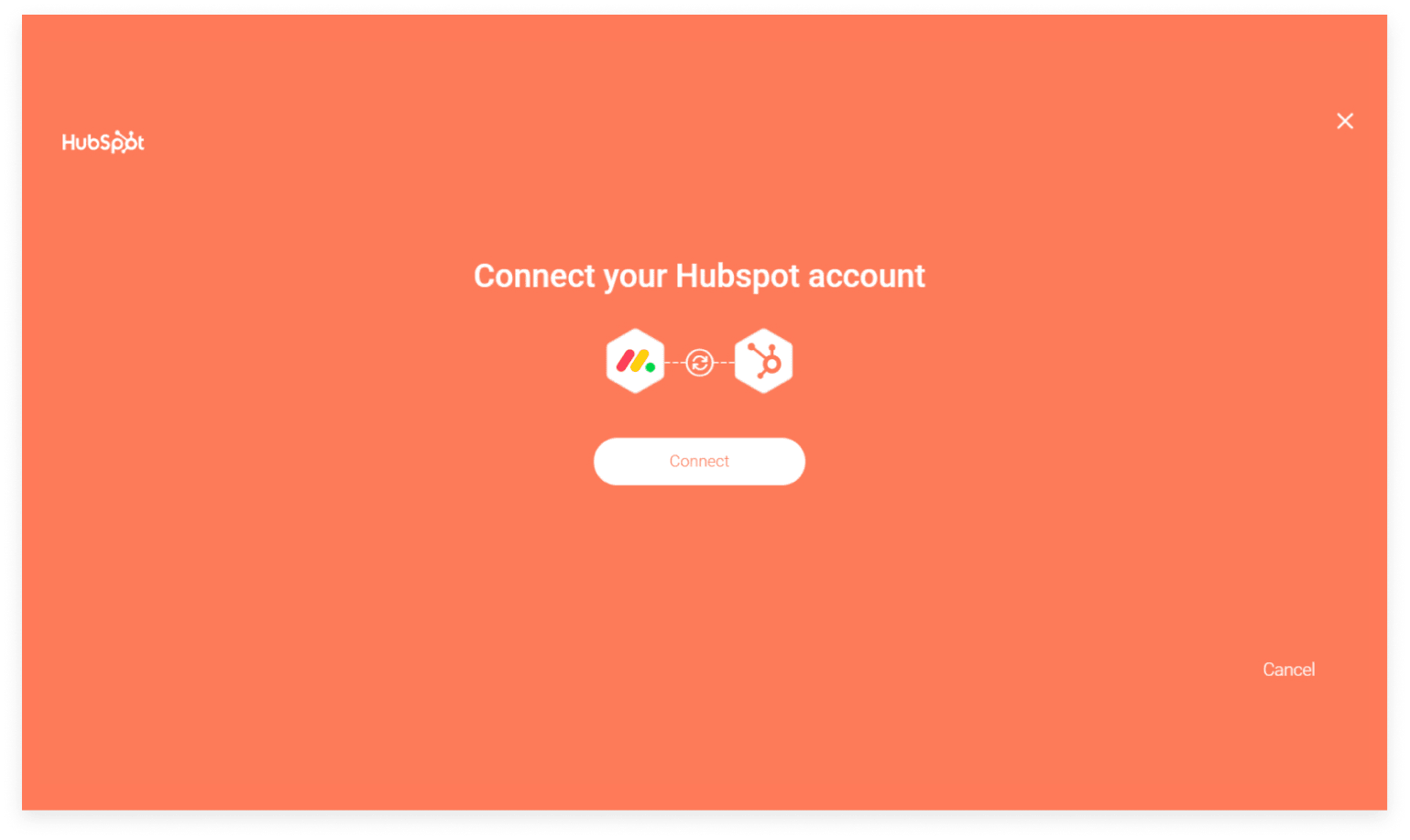
Other important integrations include:
- Team favorites: Outlook, Microsoft Team, Dropbox, Slack, and Zoom, among others.
- CRM integrations: Salesforce, Zendesk, Copper, and Pipedrive.
- Marketing integrations: Mailchimp, Facebook Ads, Clearbit, and JotForm.
- Project management integrations: Asana, Trello, Basecamp, and Harvest.
- Software development integrations: Jira, GitHub, PagerDuty, and GitLab.
With our integrations center, you can create “If this, then that” recipes to automate repetitive tasks and activities based on specific trigger actions.
For instance, you could create a Gmail integration recipe so that every time a new item is created, you send an email to a specific person — e.g., teammate, client, partner, etc. — automatically.

You could then create a Clearbit recipe to populate customer information into a specific monday.com board. This way, your sales reps won’t need to manually research customers anymore.
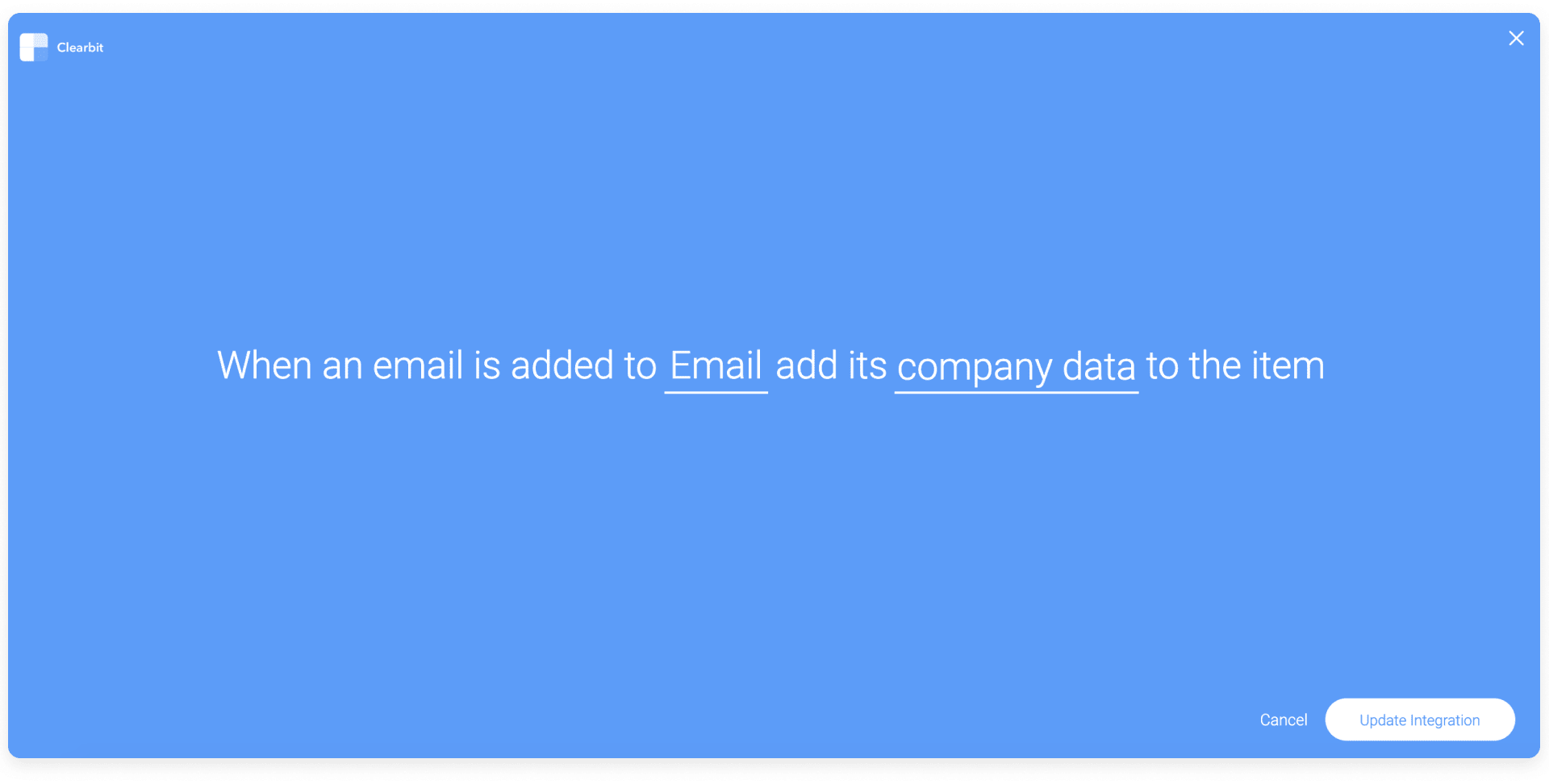
These are just small examples of everything you can do with our integrations. To get a more thorough understanding of our integrations center, we suggest you watch this short video overview:
HubSpot vs. Marketo: customer reviews
Let’s take a closer look at how HubSpot and Marketo, as well as monday.com, compare in terms of customer reviews.
Now, with hundreds of software reviewing companies available, it was tough to decide where to start. For the sake of brevity, we’ll focus on 3 of the major ones: G2, Capterra, and TrustRadius.
G2 reviews
G2 is one of the largest tech reviewing networks, where you can get unbiased opinions from real users.
Overall rating: HubSpot’s Marketing Hub has 4.4 out of 5 stars with 6,536 reviews, and Marketo Engage has 4.1 out of 5 stars with 2,193 reviews. For comparison, monday.com has 4.6 out of 5 stars, with 1,476 reviews.
Usability rating: HubSpot’s Marketing Hub has a usability rating of 8.6 out of 10, while Marketo scores 7.1 out of 10. For comparison, monday.com scores 9.1 out of 10.
Capterra reviews
Capterra focuses on simplifying the software purchasing process by providing extensive reviews on the different companies available.
Overall rating: HubSpot’s Marketing Hub has 4.5 out of 5 stars with 4,424 reviews, and Marketo Engage has 4.2 out of 5 stars with 588 reviews. monday.com has 4.6 out of 5 stars, with 2,253 reviews.
Usability rating: HubSpot’s Marketing Hub has a usability rating of 4.4 out of 5, while Marketo scores 3.8 out of 5. monday.com scores 4.6 out of 5.
TrustRadius reviews
TrustRadius markets itself as “the most trusted review site for business technology.” It helps you find quality reviews of the most popular software available.
Overall rating: HubSpot’s Marketing Hub has a TrustRadius score of 8.5 out of 10 with 1,713 reviews. Marketo has a TrustRadius score of 7.9 out of 10 with 1,983 reviews. monday.com has a TrustRadius score of 8.6 out of 10, with 1,705 reviews.
Usability rating: in terms of usability, the numbers also happen to fall in our favor. HubSpot scores 8 out of 10, Marketo 5.1 out of 10, and monday.com 8.5 out of 10.

How to choose the right platform for your team
To be honest, that’s a tricky question.
It all comes down to what success means for you.
If you’re just looking for advanced marketing automation software, then Marketo is probably a good option. If you want a more versatile system, though, then HubSpot might be a better fit (though you’ll sacrifice the level of specialization Marketo provides).
But what if you want the best of both worlds?
Well, here’s where monday.com comes in.
So, why don’t we quickly cover what we offer at monday.com and how that compares to Marketo and HubSpot?
Let’s start with a basic question.
What’s monday.com?
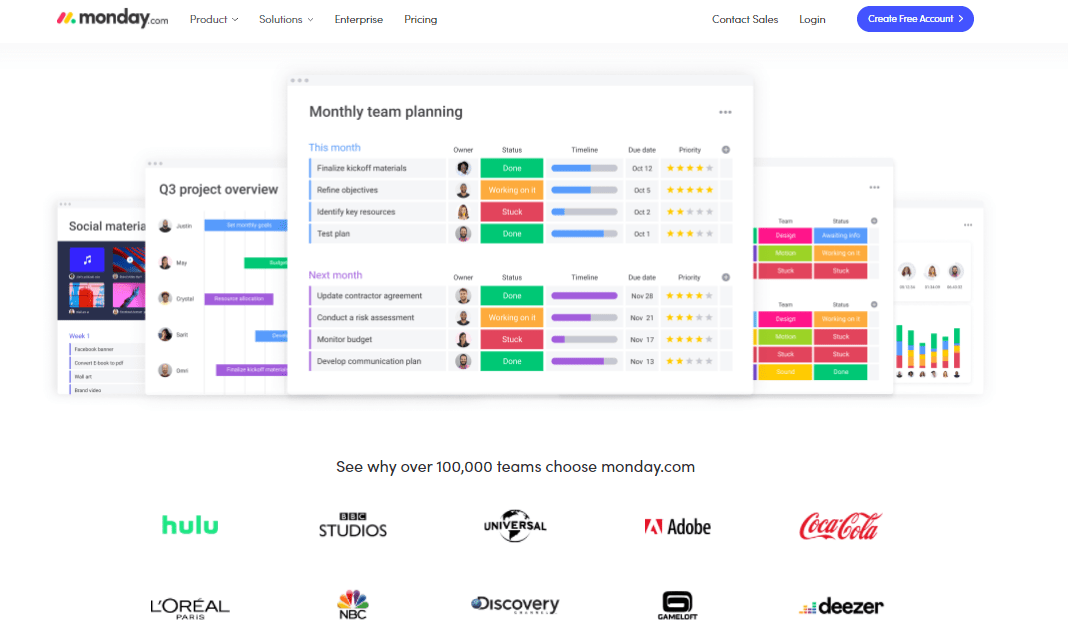
First, monday.com isn’t a CRM system in the traditional sense of the term, nor is it a marketing automation platform. It’s not even project management software.
Sure, monday.com supports all of those functionalities, but that’s not even scratching the surface.
To be precise, monday.com is a Work Operating System (Work OS). That is a system where you can build custom digital workspaces for many different use cases, including:
- Project management
- CRM and sales
- Marketing
- Customer service
- HR
- IT
- Software development
- And many more
For instance, companies like Genpact and Software AG used monday.com to improve productivity at work, increasing cross-team collaboration by 40% and 71%, respectively.
Others use our platform to increase sales, like Entrepreneur Magazine, which increased overall digital sales by 23% after adopting monday.com.
And some others use monday.com to create contingency plans against COVID-19, like the Argentinian Red Cross, which used our platform to digitize core processes to combat the pandemic.

Now, let’s dig a bit deeper into our core features.
Top monday.com’s features
- Workflow automation: automate up to 250,000 human actions and repurpose that time on more productive activities.
- Pipeline management: manage your prospects and deals in one intuitive space and increase your conversion rates.
- Customer tracking: track every customer interaction in a timeline and get valuable insights about your audience.
- Contact management: store and manage unlimited contacts.
- Reporting: get access to customizable reporting dashboards to visualize the information that’s most important to you.
- Data visualizations: visualize your workflows from multiple angles and perspectives, including Kanban, Map, Timeline, Gantt, Workload, and more.
- Forms: create multiple contact forms to capture valuable information and incoming requests.
- Team management: bring your entire team to the platform, assign tasks, and measure your progress with ease.
But, to be honest, that’s just the tip of the iceberg. To get a full description of all our features, please visit our product overview page.
Why monday.com?
From the start, you get access to 30 column types, 8 data visualizations, 200+ pre-made templates, and 20+ dashboard widgets.
All of these “building blocks” come with drag-and-drop features so you can design a platform that fits your needs, even if coding isn’t your forte.
Rather than relying on multiple platforms, monday.com helps you work in a single place.
From marketing automation to CRM and even project management, monday.com helps you build a digital workspace that feels just perfect.
For instance, let’s take a look at some relevant templates.
CRM and marketing templates
All of our templates are fully customizable.
Simply choose one from our list, click “Install,” and voila! All there’s left is to update the template with your information, and we’ll take care of the rest.

In terms of marketing and CRM, some popular templates include:
- CRM template: manage your customer relationships, track every interaction, and optimize your processes with ease.
- Sales process template: structure any type of sales process and quickly visualize where your team is at in the flow.
- Post-sales template: see the status of your deals in one glance and centralize all your communications in one place.
- Client manager template: use this template to simplify your client communication.
- Team task management template: manage all the activities of your team, assign tasks, and measure the progress of each member.
- Lead management template: assign leads to specific sales reps and make sure no deal slips through the cracks.
- Sales pipeline template: record every single step in your sales process and track your progress.
Whether you’re a sales manager trying to close more deals, a business owner looking to streamline some processes, or a marketing professional wanting to tap into automation software, you’ll find a monday.com template that’ll make your job easier.
You can see our full list of templates here.
The verdict?
As you may see, choosing the right software depends on what success means for you. What are you trying to achieve?
Do you want to automate your marketing efforts? Are you looking for a versatile CRM system? Or it could be that, maybe, you’re looking for a more flexible solution that brings both worlds together? If the latter, then monday.com might help.
Thanks to our customizable features, you can build a platform that feels just perfect for you without the need for training or coding skills whatsoever!
To start, why don’t you try out our fully customizable CRM template and get a taste of what you can expect?


